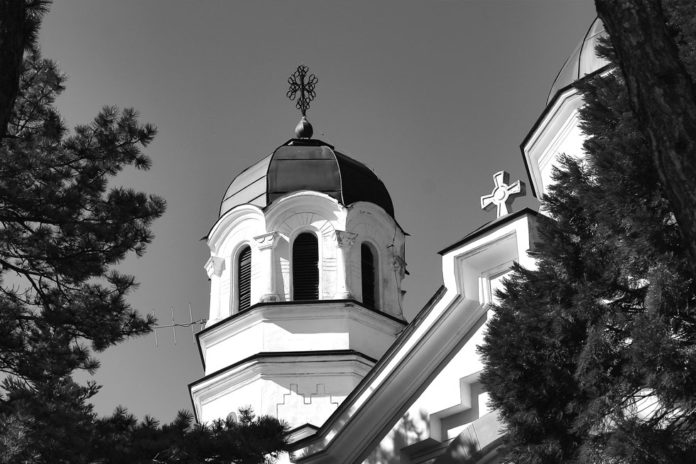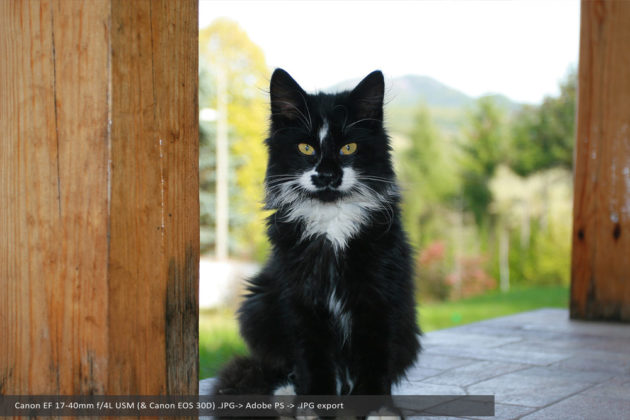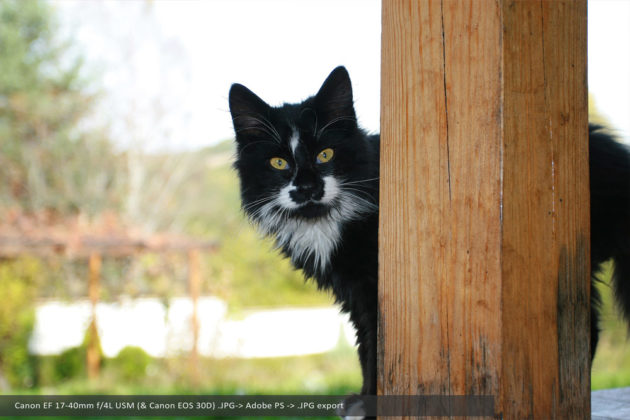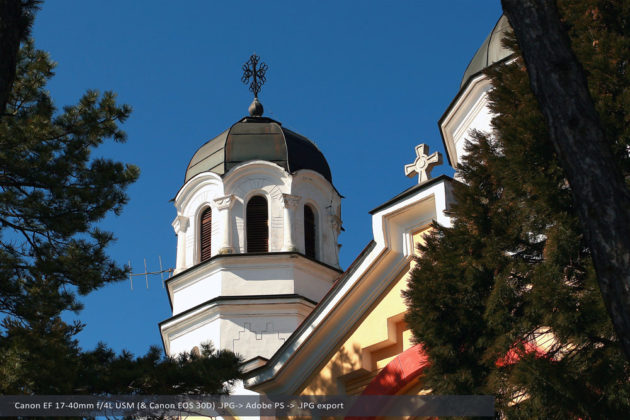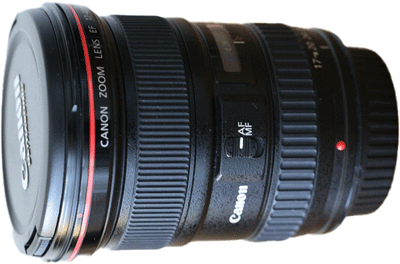Lens overview
Marketed in May 2003, the EF 17–40 mm f/4L USM arrived as Canon’s affordable L‑series ultra‑wide for full‑frame and an all‑round wide zoom for APS‑C. The optical core uses 12 elements in 9 groups with three asphericals (1 molded + 2 replica) and one Super UD element to control the usual wide‑angle nasties. It focuses to 0.28 m at all focal lengths with 0.24× max magnification, takes 77 mm filters, weighs ≈ 475 g, and measures Ø 83.5 × 96.8 mm. It’s weather‑resistant, but requires a front 77 mm clear filter to complete the seal. The original list price in Japan was ¥120,000. Canon Global
Versions. There’s only one optical/mechanical version of the 17–40/4L since 2003 (packaging/manual updates aside). Canon shipped the EW‑83E hood; alternative hoods exist, but EW‑83E is the intended match.
Build and ergonomics
This is one of the lightest L‑series zooms: a compact, balanced barrel, ring‑type USM with full‑time MF, a non‑rotating front, and a rear gelatin filter holder for special filters. The zoom feels more “tool” than “trophy”—ideal for long days when you’re hiking from the city to the summit. To maintain weather resistance, keep a 77 mm clear/protect filter mounted; without it, the front group’s movement leaves a gap.
Optical performance
Sharpness & contrast. In the center, performance is strong at f/4 across the range. On full frame, the 17–20 mm corners are the weak spot at f/4; stopping to f/5.6–8 lifts edges, with f/8–11 giving the most uniform results for landscapes/interiors. At 40 mm, the lens is very respectable, particularly at mid‑apertures. On APS‑C, corners look cleaner since you’re sampling the central image circle.
Bokeh & rendering. You don’t buy a 17–40 for bokeh, but close‑focus at 40 mm can give pleasant, smooth backgrounds for details and table‑top scenes. The 7‑blade (rounded) diaphragm produces tidy diffraction stars when stopped down.
Distortion, vignetting & flare. Expect barrel distortion at 17–20 mm, transitioning toward mild pincushion by 40 mm; profiles handle it. Vignetting is visible at 17 mm f/4 on full frame, calmed by f/5.6–8. Coatings manage flare well, but a low sun near the frame demands the EW‑83E hood (and thoughtful framing).
Chromatic aberration. Lateral CA shows at the extreme wide end along high‑contrast edges; Lightroom/ACR profiles remove it cleanly. Longitudinal CA is modest for an ultra‑wide zoom. Color is neutral with a typical L‑series punch.
Digital adaptation (today’s bodies)
On the EOS R‑series, the lens adapts via EF‑EOS R with full AF, EXIF, and aperture control—no penalties. Because the lens has no IS, IBIS on bodies like the R5/R6 provides functional hand‑held stability for interiors and dusk landscapes; the pairing feels native in use. On Sony/Nikon/L‑mount, third‑party “smart” EF adapters also preserve AF and EXIF, but Canon’s own RF bodies remain the smoothest experience.
Historical & collector context
The 17–40/4L replaced the EF 20–35/3.5–4.5 USM and sat below the fast EF 17–35/2.8L (and later EF 16–35/2.8 generations) as the value L ultra‑wide. In 2014, the EF 16–35 mm f/4L IS USM surpassed it optically (and added IS), while the RF 14–35 mm f/4L IS is today’s native‑mirrorless analog. Yet the 17–40 remains a beloved travel/landscape staple: light, rugged, filter‑friendly, and still widely available at attractive prices.
Impressions
Think of this lens as your walk‑around wide. At 17–22 mm, stop down to f/8–11 to even out corners for architecture or sweeping scenes; at 24–35 mm, use f/5.6–8 for crisp, punchy frames for street and travel; at 40 mm, use 0.24× close‑focus for environmental details. On R‑series, enable IBIS and you’ll comfortably hand‑hold at slower speeds than you could on DSLRs—handy for museums, churches, and blue hour cityscapes. Canon Europe
Modern comparison
Pairings we’ve reviewed: The EF 70–200 mm f/4L USM (our review) makes a light two‑zoom travel kit; the EF 100–400 mm f/4.5–5.6L IS II (our safari favorite) complements it when reach matters; for fast‑aperture normal, see our EF 50 mm f/1.2L review.
EF 16–35 mm f/4L IS USM. Sharper corners, better CA/distortion control, and IS—but heavier and pricier. If you print big or shoot a lot at 16–18 mm on full frame, it’s the stronger pick.
RF 14–35 mm f/4L IS USM. Wider, stabilized, and optimized for mirrorless stacks—also the most expensive of the three.
Sample photos
Verdict — Pros & Cons
Pros
• Lightweight L‑series ultra‑wide; takes common 77 mm filters
• Weather‑resistant (with front filter installed) and travel‑ready
• Reliable ring‑USM AF; 0.28 m / 0.24× close‑focus is genuinely useful
• Great value used; adapts perfectly to EOS R (IBIS helps)
Cons
• Soft corners at 17–20 mm on full frame at f/4; prefers f/8–11
• Barrel distortion and vignetting at the wide end (profile fixes)
• No IS; for hand‑held interiors, the 16–35/4 IS is safer
• Only f/4; if you need low‑light speed, you’re looking at f/2.8 zooms, mirrorless


